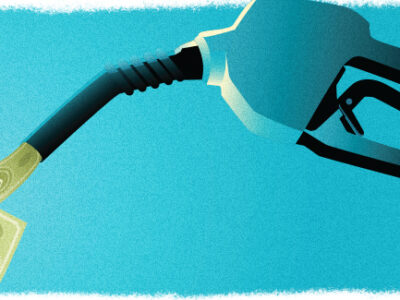Gold has opened 2008 with a bang. The price of the yellow metal has soared to all-time nominal highs, surpassing $900 per ounce. “So what?” you may ask. “Unless one works for a mining company or a jeweler, gold is a trivial or nonexistent factor in one’s life.” True. But do you use dollars for your money? If so, then you ought to be concerned about the rising price of gold (POG).
Gold is sometimes known as an inflation barometer. I prefer to characterize it as the most reliable indicator of confidence in our currency. When confidence in the U.S. dollar is high and people desire to hold dollars, then POG is low in dollar terms. Conversely, when confidence in the dollar is low and people’s desire to hold dollars has ebbed, then POG is high in dollar terms.
Why is gold a reliable monetary indicator? Historically, gold emerged as the preferred choice of money in countries around the world. Because of the painful hyperinflation of the Continental currency during the Revolutionary War, our Founding Fathers made the U.S. dollar a fixed quantity of gold. Indeed, that was the case for most of our history; thus, the saying as late as in the mid-1900s that “the dollar is as good as gold.”
From our everyday perspective, in which we habitually express economic value in terms of dollars, gold appears to fluctuate greatly in value. This, however, is an illusion, comparable to the illusion that the sun orbits the earth. If we change our frame of reference from the dollar to gold, we note that gold has maintained roughly the same purchasing power for centuries, and it is paper money that fluctuates wildly in value. Federal Reserve Notes, for example, have less than five percent of the purchasing power they had when introduced in 1914; yet, in not too many years, we will look back longingly on paying “only” three Federal Reserve Notes for a gallon of gas.
POG is telling us in no uncertain terms that confidence in the dollar is falling. As explained in my Dec. 27 “Anatomy of a Financial Crisis,” U.S. policymakers decided to sacrifice the dollar to keep the financial markets from grinding to a halt. Even before that crisis emerged, the demise of the Federal Reserve Note could be foretold. Americans are drowning in debt. Individuals and corporations hold record amounts of debt, but the greatest debtor of all is Uncle Sam. Only the naïve would think that Uncle Sam can indefinitely finance his $9 trillion of officially acknowledged debt, his other trillions of off-budget debt, and the tens of trillions of unfunded liabilities for Medicare, Social Security, etc. The only viable political option is to have the Fed inflate the money supply, thereby reducing the exchange value of each currency unit, and repay creditors with cheapened dollars.
Our overall financial weakness, combined with vigorous economic growth in other countries and the consequent ongoing shrinkage of the U.S. share of global GDP, mean that the dollar’s days as the global reserve currency are numbered. POG will rise even higher as this process unfolds.
In addition to the overwhelming economic factors working against our fiat dollar, there are geopolitical factors, too. Although the rest of the world loves to criticize the United States, they like the stability of a Pax Americana. If the United States can maintain order in the world, global business benefits. On the other hand, when the United States appears to be losing control, confidence in our currency swoons in lockstep with confidence in our power.
The last time POG exceeded $800 per ounce, Iran had taken American hostages, the Soviets had invaded Afghanistan, and the United States appeared impotent. By contrast, seven years ago—in the aftermath of the dissolution of the Soviet Union and Communist Bloc, and before 9/11—the United States was regarded as the unchallenged, largely benevolent superpower, confidence in our currency was very high, and gold sold for under $300 per ounce. Now, with the assassination of Benazir Bhutto threatening to unravel nuclear-armed Pakistan, Russia and China acting to spite and discomfit us any way they can, and tensions with Iran mounting, there is diminishing confidence in the U.S. ability to maintain a peaceful global order. Consequently, investors around the world are exchanging dollars for gold.
The current high POG indicates that these are challenging times for our country, both economically and geopolitically. If the two major parties cannot set aside their endless bickering and unite to address the major challenges facing our country, the dollar will sink more and gold will continue to rise. Let us pray that this doesn’t happen.



